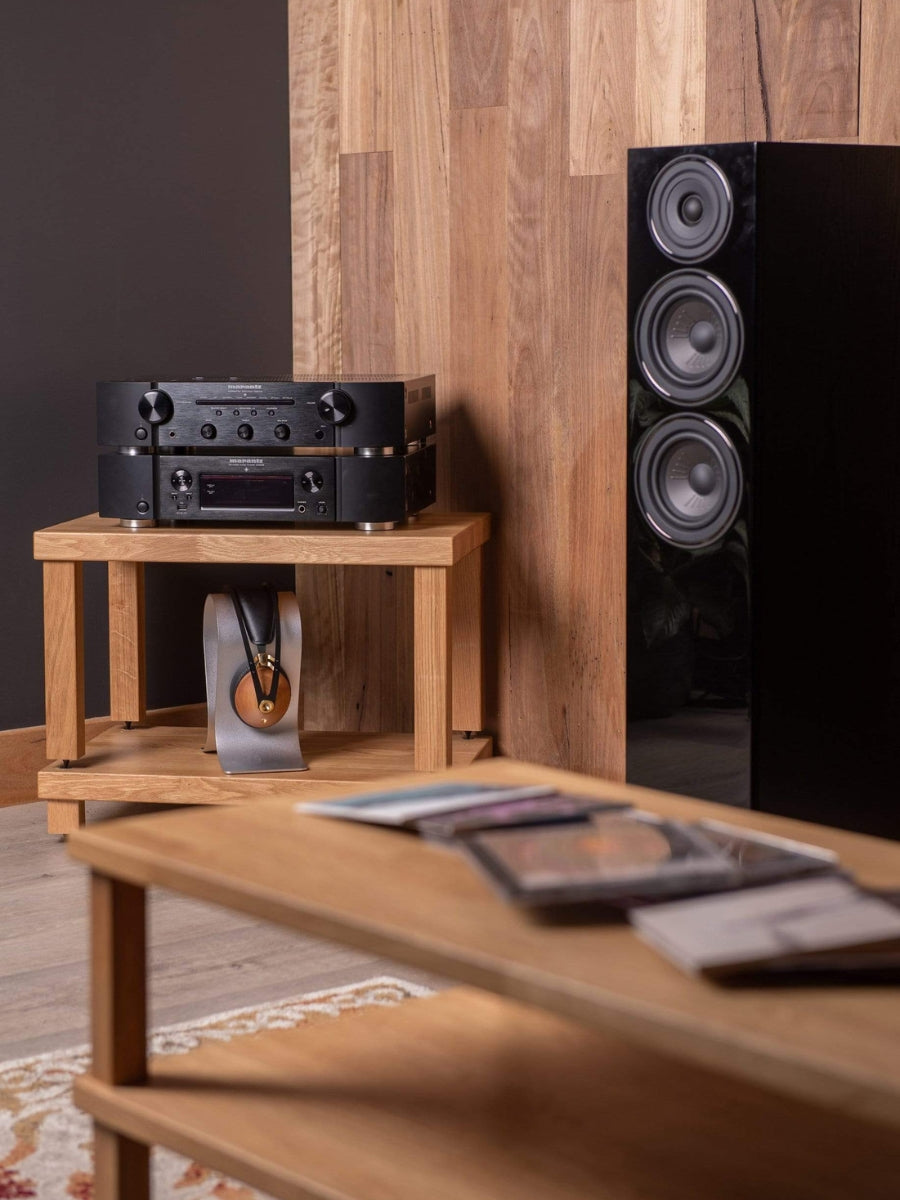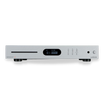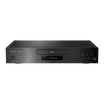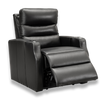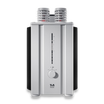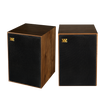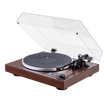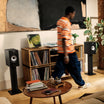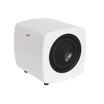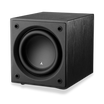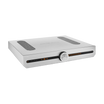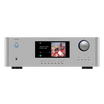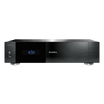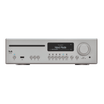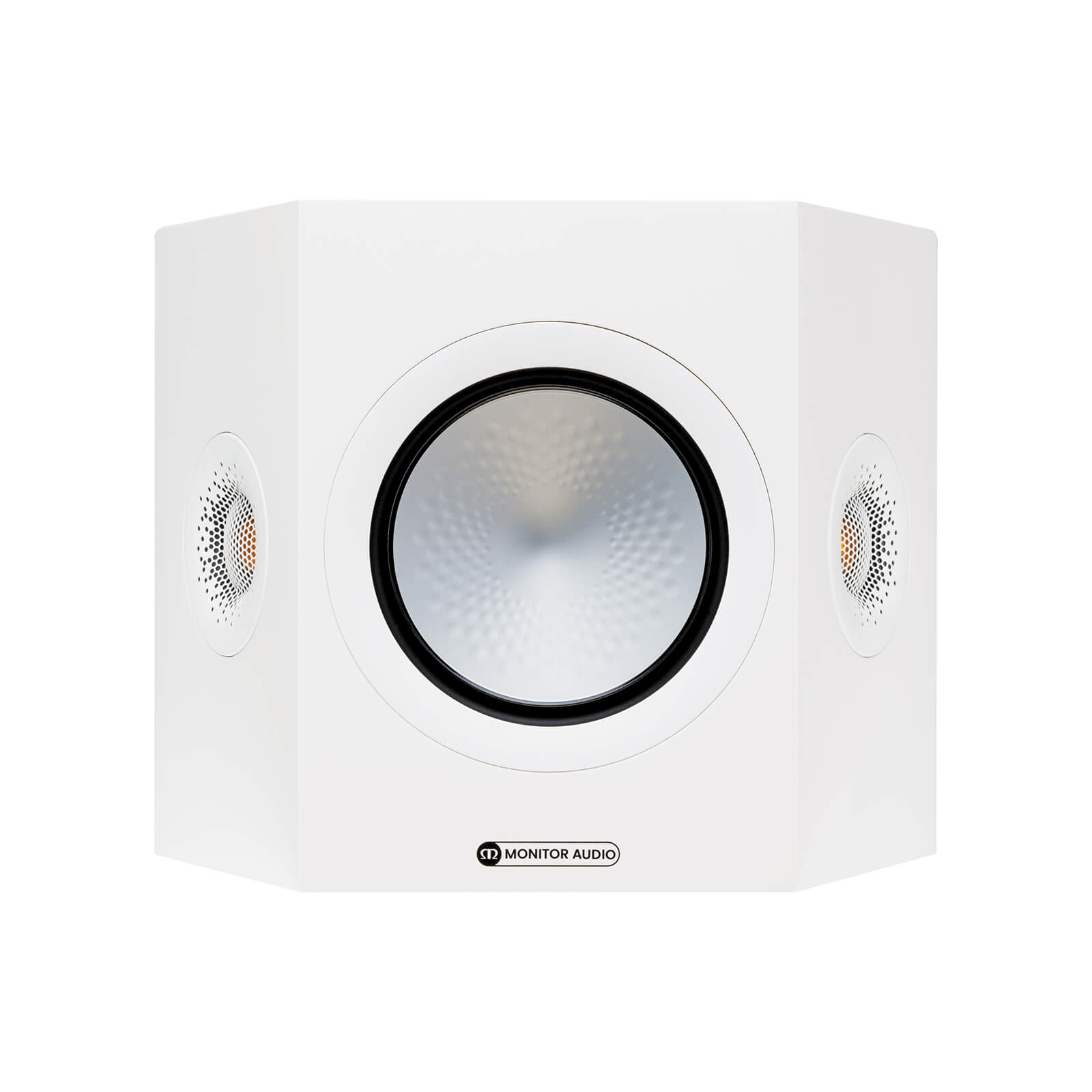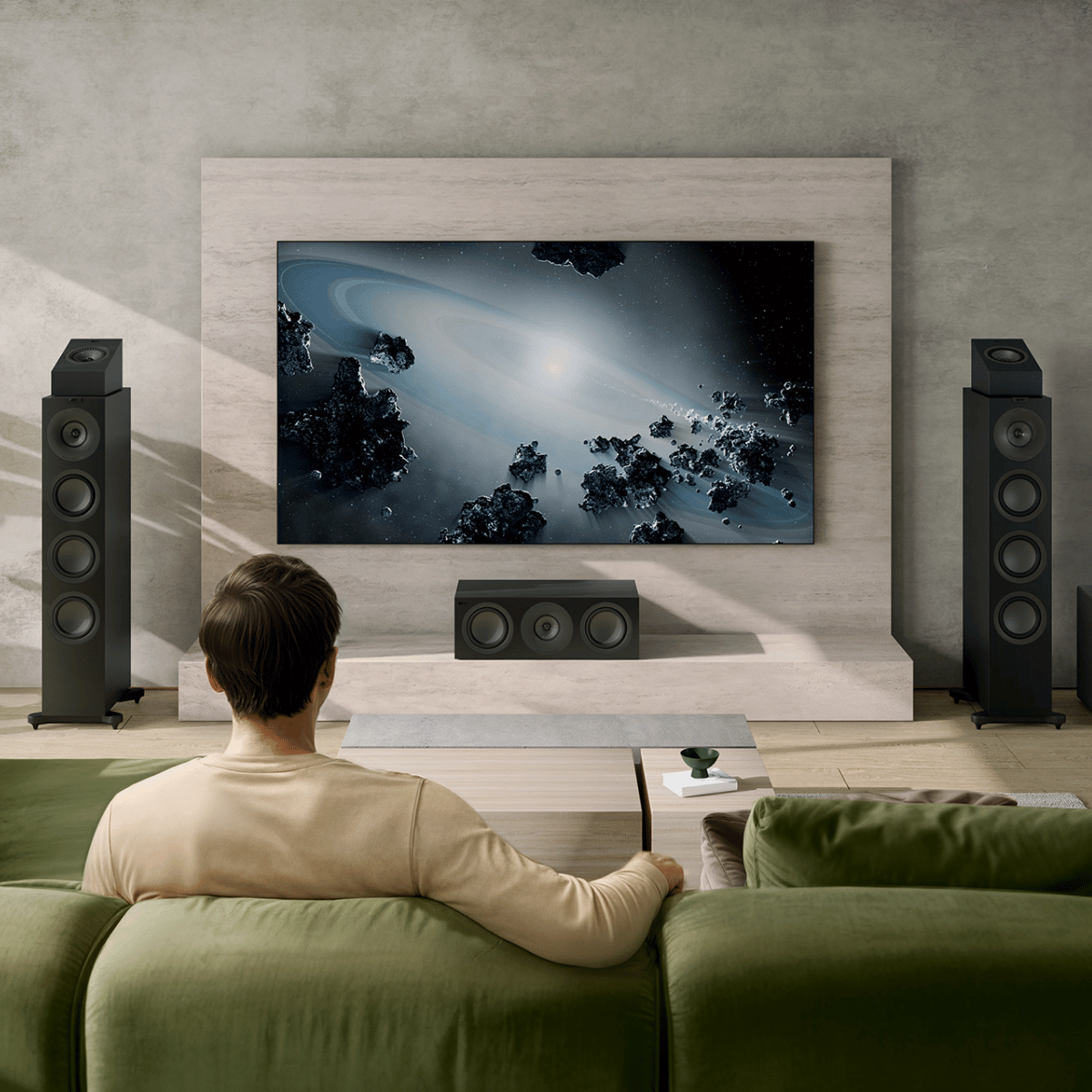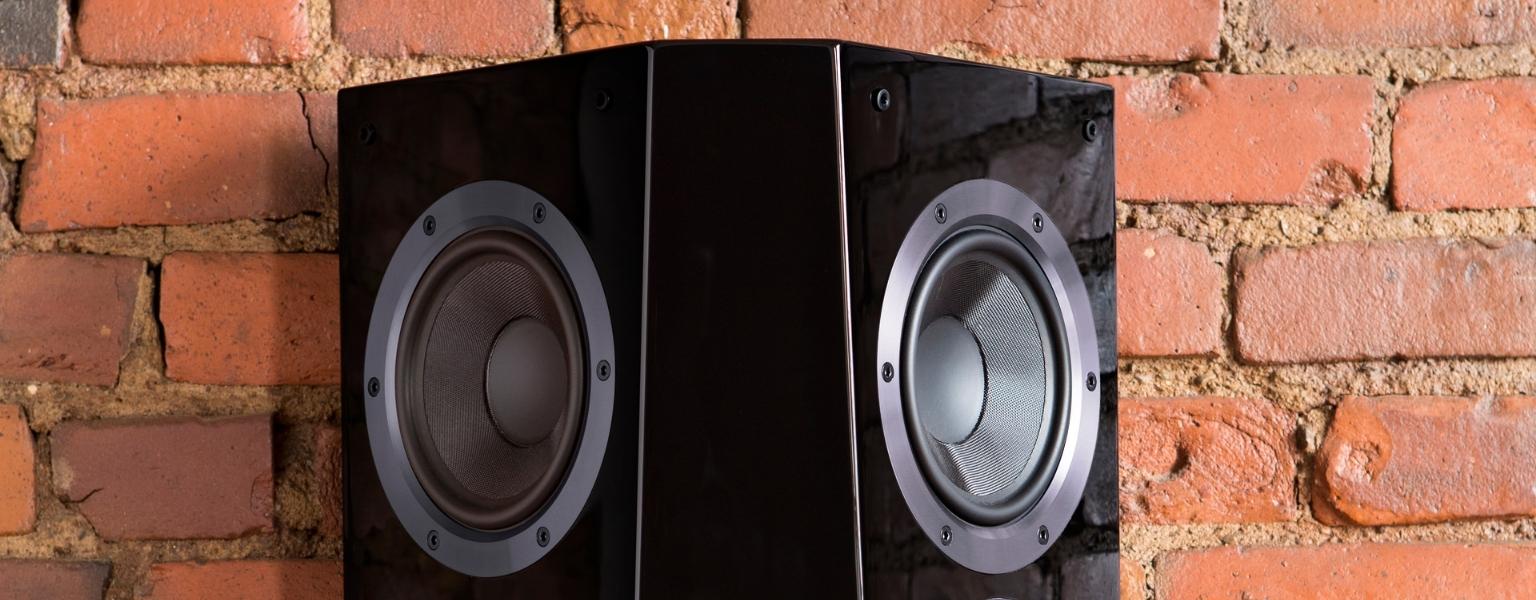

Surround Sound Speakers
Filters
2 products
TELL ME MORE ABOUT
Surround Sound Speakers
Surround speakers are an essential component of any high-quality home theatre system, designed to create an immersive audio experience that places you at the heart of the action. By delivering... Read More
Surround speakers are an essential component of any high-quality home theatre system, designed to create an immersive audio experience that places you at the heart of the action. By delivering sound from multiple directions, surround speakers enhance the realism and depth of your movies, music, and games, making every listening session a captivating event. Our collection of surround speakers includes a variety of models to suit different room sizes, aesthetic preferences, and audio requirements.
What Are Surround Speakers?
Surround speakers are a crucial element of a home theatre system, designed to deliver sound from various directions, enveloping the listener in a 360-degree audio environment. Unlike traditional stereo speakers that project sound from the front, surround speakers are strategically placed around the room to create a more immersive and dynamic listening experience. They handle ambient sounds, background effects, and directional audio cues, enhancing the realism and depth of movies, music, and video games.
Typically, a surround sound setup includes multiple speakers: front left and right speakers, a centre channel, subwoofers, and surround speakers placed to the sides or behind the listener. The role of the surround speakers is to fill the room with sound, creating a sense of space and movement that mirrors real-life audio experiences. This multi-channel audio configuration allows for precise sound localization, making it possible to hear effects like footsteps approaching from behind or rain falling around you.
Surround speakers come in various designs, including bookshelf, satellite, and in-wall models, catering to different room layouts and aesthetic preferences, with options available for both wired and wireless setups. They work best when paired with an AV receiver that supports surround sound formats such as Dolby Digital, DTS, or Dolby Atmos, ensuring optimal performance and seamless integration with other audio components.
How to Choose the Best Surround Sound Speakers for Your Needs
Choosing the right surround sound speakers for your home theatre involves several key considerations to ensure you achieve the best audio experience.
We recommend getting in touch with our in-house experts to help plan out your system and match everything correctly - however, in the meantime - here are some important factors that will help to guide your decision:
1. Room Size and Layout: The size and shape of your room significantly impact the type of surround speakers you should choose. Larger rooms may require more powerful speakers or additional units to fill the space effectively, while smaller rooms might benefit from compact satellite speakers or in-wall models that save space.
2. Speaker Configuration: Determine the ideal speaker configuration for your setup. Common configurations include 5.1 (five speakers and one subwoofer), 7.1 (seven speakers and one subwoofer), and more advanced setups like 9.1 or Dolby Atmos systems with height channels, often available as part of a comprehensive package. Your AV receiver must support your chosen configuration to ensure compatibility and optimal performance.
3. Sound Quality: Pay attention to the frequency response, sensitivity, and power handling of the speakers. Higher sensitivity speakers require less power to produce the same volume level, and a wide frequency response ensures detailed sound across all ranges. Listen to different models if possible to find the sound profile that best suits your preferences.
4. Design and Aesthetics: Choose speakers that match your home decor and fit seamlessly into your space. Options range from traditional bookshelf and floor-standing speakers to sleek, modern in-wall or on-wall designs. Consider the placement of your speakers to ensure they blend well with your room's aesthetics.
5. Budget: Set a budget and compare options within that range. While higher-end models often offer superior sound quality and features, there are excellent surround speakers available at various price points to suit different budgets.
What Are the Key Differences Between Different Types of Surround Speakers?
Surround speakers vary in design, size, and functionality. Bookshelf speakers are versatile and powerful, ideal for larger rooms. Satellite speakers are compact and easy to place, suited for smaller spaces; consider wireless options for added convenience. In-wall and on-wall speakers offer a sleek, discreet appearance, blending seamlessly into your decor. Some surround speakers include built-in amplifiers (active speakers), while others require external amplification (passive speakers). Additionally, certain models support advanced formats like Dolby Atmos, featuring upward-firing drivers for overhead sound. Understanding these differences helps you select the right surround speakers to match your room size, layout, and audio preferences.
Final Thoughts
Choosing the right surround speakers is crucial for creating an immersive and engaging home theatre experience. By considering factors such as room size, speaker configuration, sound quality, design, and budget, you can find the perfect speakers that meet your needs and preferences. Whether you opt for bookshelf, satellite, in-wall, or advanced Dolby Atmos speakers, the right choice will enhance your audio experience, making movies, music, and games come to life. Explore our collection to discover high-quality surround speakers that offer exceptional performance, seamless integration, and aesthetic appeal, transforming your entertainment space into a true auditory haven.
Some Quick FAQ:
Can I mix and match different brands of surround speakers in my home theatre system?
While it's possible to mix and match brands, it's generally recommended to use speakers from the same brand and series to ensure tonal consistency and balanced sound across all channels.
How should I position my surround speakers for optimal performance?
This varies depending on various factors. However, as a general guide, place surround speakers to the sides or slightly behind the listening area at ear level or slightly above, angled toward the listener. For 7.1 systems, additional rear speakers should be placed directly behind the listening area.
Do I need a special receiver for Dolby Atmos surround speakers?
Yes, to fully utilize Dolby Atmos capabilities, you need an AV receiver that supports Dolby Atmos and has the appropriate number of channels for your speaker configuration.
What is the benefit of using in-wall or on-wall surround speakers?
In-wall and on-wall surround speakers save floor space and offer a clean, unobtrusive look while still providing excellent sound quality, making them ideal for rooms with limited space or a minimalist design aesthetic.
How much power do my surround speakers need from the receiver?
The power requirements depend on the speaker's sensitivity and impedance. Generally, ensure your receiver can provide enough power (measured in watts) to drive the speakers efficiently without distortion, typically matching or exceeding the speaker's recommended power range.
NEED MORE GUIDANCE?
We are here to help
Check out some of our most commonly asked questions.
What do I need to play records?
Getting into vinyl? That’s awesome! We have some curated turntable Hi-Fi packs, with everything you'll need to get spinning right away. But if you want to build your own, read on for all the details.
First off, you'll need a turntable. It's the star of the show, so make sure it’s in good nick, with a decent cartridge and stylus (needle).
Next, there’s the phono preamp. Some turntables or amplifiers come with one built-in, but if yours doesn’t, you’ll need one as a bridge between your turntable and amplifier or powered speakers.
For the sound output, you’ve got two options. You can go with a traditional setup involving an integrated amplifier to take the signal from your phono preamp and power your passive speakers. Alternatively, you can opt for powered speakers, which have the amplifier built in – a handy all-in-one solution.
Speaking of speakers, good ones are a must for that rich, warm vinyl sound we all love. Whether you go for bookshelf or floorstanding speakers (or powered ones) depends on your space and budget.
And there you go! With these essentials, you’ll be ready to dive into your vinyl collection and enjoy that classic sound.
What can a wireless speaker do?
Wireless speakers are a game-changer for how you enjoy music and audio around the house. First off, they let you stream music wirelessly from your phone, tablet, or computer, so no more messing about with cables. You can easily play tunes from Spotify, Apple Music, Tidal or whatever streaming service you fancy.
If you’re into having music everywhere, many wireless speakers offer multi-room audio. You can sync them up to play the same music in every room or control what plays in each room individually, perfect for parties or just keeping the vibes consistent throughout your home.
Voice control is another brilliant feature. Many come with built-in assistants like Alexa, Google Assistant, or Siri. You can control your music with just your voice, ask for the weather, set reminders, or even control other smart home devices.
Sound quality? These little gadgets often pack a punch, delivering high-quality audio that can rival traditional wired setups. Some even offer 360-degree sound, filling the room with music from every angle.
In a nutshell, wireless speakers bring flexibility, convenience, and top-notch sound to your audio experience, making them a fantastic addition to any home. Whether you’re hosting a party, working from home, or just chilling out, they make listening to music a breeze.
How do you choose the right speaker & amplifier combination?
Deciding on a good speaker and amplifier combination is like putting together a perfect wine and cheese pairing—it’s all about balance and harmony. Here’s a conversational guide to help you through it:
First, consider your speakers. These are your main players, so you want to choose ones that fit your space and listening preferences. If you love deep bass and have a bit of room, floorstanding speakers might be your go-to. For smaller spaces or a more subtle look, bookshelf speakers are fantastic.
Now, onto the amplifier. This is where things get interesting. Your amp needs to match your speakers in terms of power and impedance. Check the wattage ratings on your speakers—your amplifier should provide enough power to drive them properly. Too little power and you’ll be missing out on sound quality; too much, and you risk damaging your speakers.
Next, think about the impedance (measured in ohms). Your amp and speakers should be compatible here too. Most speakers are rated at 8 ohms, but some can be 4 or 6. Make sure your amplifier can handle the impedance of your speakers to avoid any performance issues.
Another important factor is the type of sound you’re after. Some amps are known for their warm, rich tones, while others might be more neutral or even slightly bright. It’s a bit like choosing between a vinyl record and a digital stream or CD —each has its own charm. If possible, listen to different amp and speaker combinations to see what sounds best to your ears.
If purchasing online, note that at LE, we have made recommendations on speaker & amplifier combinations that we think sound wonderful together within each product listing.
Don’t forget about connectivity and features. Modern amplifiers often come with a host of options like Bluetooth, Wi-Fi streaming, and various inputs for all your devices. Make sure your amp has the inputs you need for your turntable, CD player, or streaming device.
Finally, consider your budget. Great sound doesn’t always mean breaking the bank, but be prepared to invest to get a quality setup that will last.
In the end, trust your ears. Listen to a few combinations if you can, and go with what makes your music sound the best to you.
Why do I need a headphone amplifier?
If you’re diving into the world of high-quality audio, a headphone amplifier can be a real game-changer. Think of it like this: most standard devices, like your smartphone or laptop, just don’t have the oomph needed to drive headphones properly. They might get the job done, but they won’t do your music justice. A headphone amp gives your headphones the power they need, ensuring you get the volume and clarity that really makes your music shine.
It’s not just about making things louder, either. A good headphone amp can significantly improve sound quality. You’ll get clearer highs, richer mids, and tighter bass, making your favourite tracks sound even better. You might notice details you’ve never heard before, especially if you’re listening to high-resolution audio files.
Premium headphones often have higher impedance, meaning they require more power than your typical audio source can provide. A headphone amp can handle this with ease, making sure your headphones perform at their absolute best. Plus, many amps come with extra features like bass boost, equalisation, and gain control, giving you more ways to tweak the sound to your liking.
In short, if you’re passionate about your music and want to hear it in the best possible way, a headphone amplifier is definitely worth considering. It’s all about unlocking the full potential of your gear and really getting the most out of your listening experience.
Where should I start when designing a home cinema?
Designing your own home cinema? That's awesome! We are here to help walk you through the process, but as a starting point, here’s what we would recommend and where to kick things off:
First up, pick your spot. For most people this is your existing lounge room, but if you have an underused garage, or spare bedroom, then you have an opportunity to create your very own true Home Cinema experience. Find a room that’s just right—not too cramped and ideally away from noisy areas. This sets the stage for that immersive movie experience.
Next, think about how you’ll set things up. Plan where your seats will go and where to place your projector screen for the best view from every angle. It’s all about creating that comfy, cinematic vibe.
Sound matters, too. Consider if you want a wireless system for simplicity or a full surround sound speaker system with AV receiver for that surround-sound thrill. Think about soundproofing or adding acoustic panels or thick carpets to really amp up the audio quality of the room.
Now, onto the screen. Decide between a crisp TV or a projector setup, depending on your room size and personal style. Maybe even throw in some dimmable lights or smart lighting to set the mood just right.
And hey, don’t forget comfort. Invest in plush cinema seating and think about the décor—whether it’s movie posters, blackout curtains, or popcorn machine & bar area, whatever gives you that true cinema feel.
Lastly, tech it up! Make sure everything—from your Blu-Ray player & Apple TV to your gaming consoles—is set to sync perfectly with your new setup.
With these steps, you’re on your way to creating a home cinema that’s not just a space, but an experience. Enjoy movie nights like never before!


